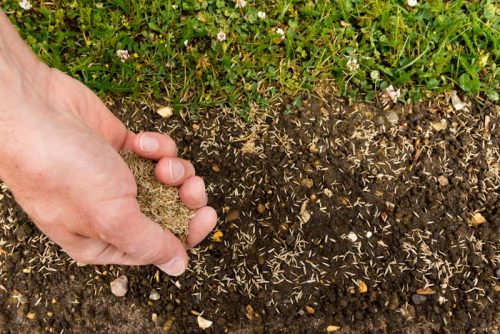When is the best and worst time to seed your lawn?

1) Most successful
The last five weeks of summer to early autumn, pending the weather, is the best time of year to plant grass seed. At this time, day and nighttime temperatures are cooling, dew is more present on lawns, and annual broadleaf weeds and crabgrass are dying. This means new turf can easily establish with little to no competition.
If you’re going to be grass seeding, this is absolutely the best time of year to do it. Don’t miss your opportunity otherwise you’ll be waiting an entire year for the next window to open.
When you do seed, watch it closely. Kentucky bluegrass mix can take upwards of 4 to 6 weeks to fully emerge while perennial rye can take 1 to 2 weeks. If you seed during drought conditions, and the seed doesn’t take, don’t hesitate to seed again. Getting something established before the ground freezes is paramount and will make a big difference in what you’re able to do with the new turf the subsequent spring. The thicker your turf is in the fall, the better it’ll hold crabgrass pre-emergent the following year.
2) Mid-autumn
By mid-October your window to seed is usually rapidly closing. A mixed bag of seed or hydroseed can take upwards of 4 to 6 weeks to emerge and establish itself to the point that it’s able to survive the winter.
Remember, at this stage in the turf’s life it’s not all about the blade…it’s about its root system. The harder the soil (due to it being frozen) the more difficult it is for roots to penetrate deep underground. At this time of year use perennial rye grass, which grows faster.
3) Early spring
Early spring is second to last on this list for a few reasons. Yes, grass seedlings are likely to grow just fine because of the typically wet, cool weather. However, here’s the caveat: But there’s a catch: Pre – emergent crabgrass control and broadleaf weed control can harm new grass. It can also be challenging to keep young turf alive through the brutal New England summer.
We do not recommend aerating and overseeding (or renovating) an entire lawn at this time of year. While aerating is beneficial, the process can actually pull weed seeds from the soil depths to the surface, exacerbating weed problems. However, if you want to patch up a few small spots, this may be a fine time to do so.
4) Late spring (May/June) – late July/early August
Little success is achieved when grass seeding an entire lawn or large sections of your property at this time of year. Doing so could set your lawn back a few to several years. You’ll be constantly battling crabgrass and weeds.
If you’re overseeding, keep the following in mind:
- Always aerate before you overseed. The seed germinates in the plugged holes which presents a cool, wet, soft, and favorable growing environment. When you place little to no seed directly on top of uncultivated soil, it does not establish.
- It can take 2 to 3 years to see the complete results of aeration and overseeding. New grass grows from the holes and the existing turf becomes thicker.
- If you’re patching up small areas of your lawn, loosen up existing soil and apply top soil. This will give the new seed a better chance to take root. Otherwise, it’s like trying to plant grass on concrete.
- Just because new seed emerges in the fall it doesn’t mean it’ll survive the following year without proper care. For example, if you forget about it several months later, it’s highly unlikely to make it through the summer. This turf needs to stay well-watered and manicured.
- Seeding areas of your lawn that succumbs to summer heat or general wear and tear is not uncommon. Adhering to the tips presented here will give your lawn the best chance of success.
See more at…https://www.greenacelawncare.com/blog/when-is-the-best-and-worst-time-to-seed-your-lawn/